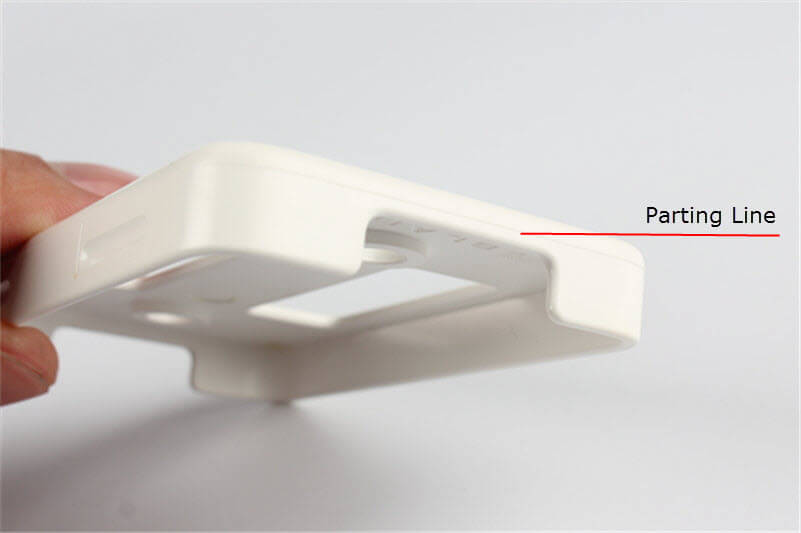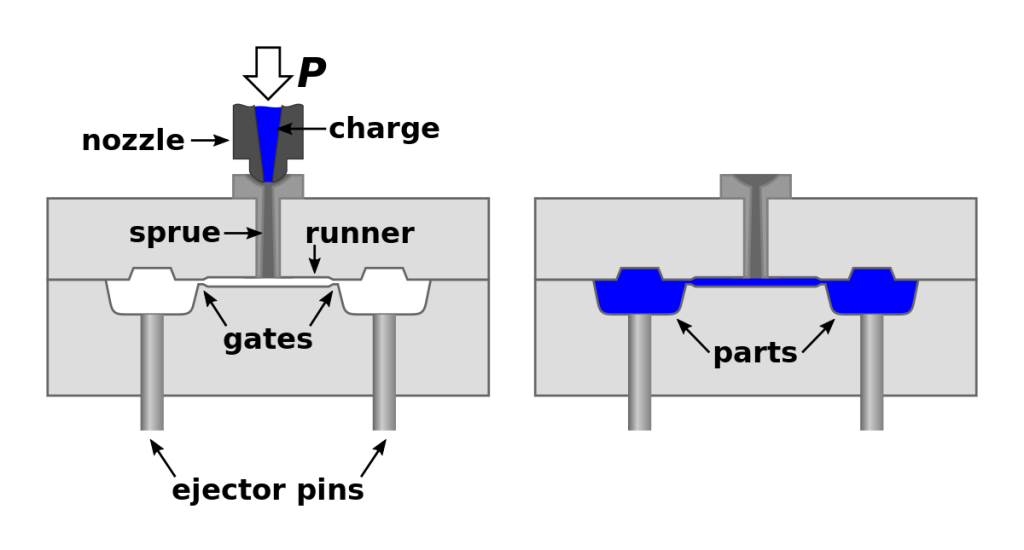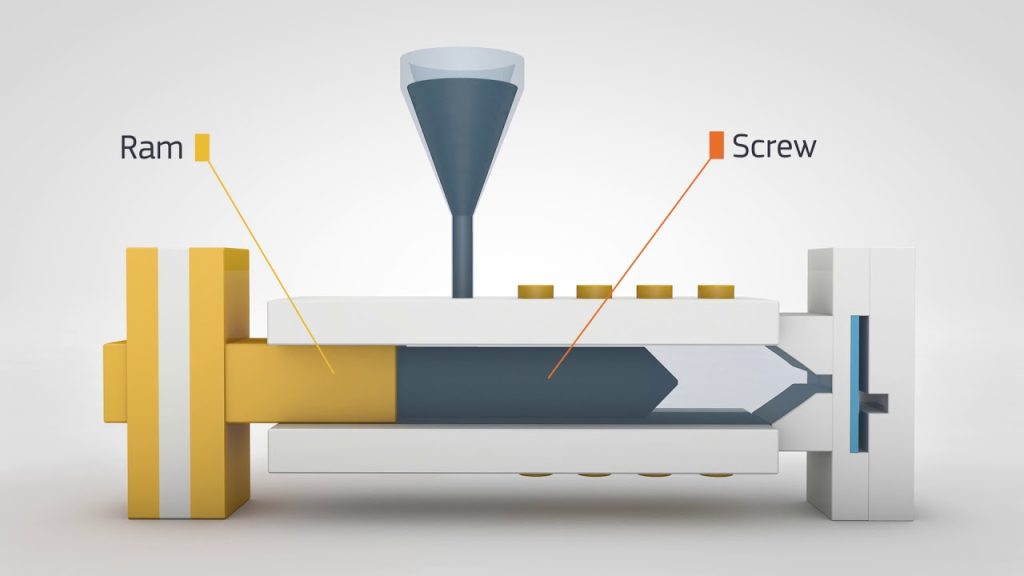Table of Contents
If you have ever looked closely at a plastic object, you may have noticed a faint line running around its circumference. This line is known as the parting line and it is a critical component in the injection molding process.
In simple terms, the parting line is the point at which two halves of a mold meet in order to create a molded plastic part. While often overlooked, understanding the role of the parting line is essential for anyone involved in injection molding. Let’s dive deeper into this important aspect of plastic manufacturing.
What is Parting Line in Injection Molding?
The parting line is an essential element of the injection molding process. It is the line where two halves of the mold meet, and it determines the shape and design of the final product. Understanding the importance of the parting line is crucial for producing high-quality injection-molded parts.
What is the Parting Line?
The parting line is the boundary between the two halves of the mold. It separates the cavity, where the molten plastic is injected, from the core, which creates the internal features of the part. The parting line is defined by the design of the mold, which is created by a mold maker or designer.
The parting line is significant because it determines the final shape and design of the part. If the mold halves do not meet correctly, the plastic will flow into the gap, creating flash or excess material. Additionally, the parting line can leave a visible seam on the final product, which can affect the product’s appearance and functionality.
How is the Parting Line Determined?
The parting line is determined by the product’s design and the mold’s requirements. The mold designer will choose the best location for the parting line based on the product’s geometry, the part’s required finish, and the mold’s requirements. The parting line must be located in an area that allows easy ejection of the part from the mold and does not interfere with any features of the part.
Once the parting line is determined, the mold halves are designed to meet at that location. The mold maker will create the cavity and core halves of the mold, including all necessary features and mechanisms for ejecting the part from the mold. The mold halves will be machined to meet precisely at the parting line, ensuring that the plastic flows correctly and that no flash is created.
Benefits of a Well-Designed Parting Line
A well-designed parting line can provide several benefits, including:
- High-Quality Parts: A well-designed parting line can ensure that the plastic flows correctly, creating high-quality parts that meet all design specifications.
- Efficient Production: A well-designed parting line can reduce production time and costs by ensuring that the plastic flows correctly and eliminating the need for post-processing.
- Improved Aesthetics: A well-designed parting line can improve the final product’s appearance by minimizing visible seams and flash.
- Increased Productivity: A well-designed parting line can increase productivity by reducing the risk of mold damage and downtime.
Parting Line vs. Gate Location
The parting line and gate location are two critical elements of the injection molding process. The gate is the point where the molten plastic enters the mold, and it is usually located at the parting line. However, in some cases, the gate may be located in a different location on the mold, such as on the side or bottom of the part.
The parting line and gate location are related because the gate location must be chosen based on the parting line’s location. If the gate is located too far from the parting line, the plastic will not flow correctly, and flash or other defects may occur. Therefore, it is essential to choose the gate location carefully, taking into account the parting line’s location and the part’s geometry.
Conclusion
In conclusion, the parting line is a crucial element of the injection molding process. It determines the final shape and design of the part and can affect the product’s appearance and functionality. Understanding the importance of the parting line and designing it correctly can provide significant benefits, including high-quality parts, efficient production, improved aesthetics, and increased productivity. By paying attention to the parting line and gate location, mold makers and designers can create injection-molded parts that meet all design specifications and exceed customer expectations.
Frequently Asked Questions
Injection molding is a complex manufacturing process with various technical terms. One such term is the “parting line.” Here are some commonly asked questions about what a parting line is in injection molding:
What is a parting line in injection molding?
A parting line is the area where the two halves of a mold meet in injection molding. These two halves are also known as the core and the cavity. The parting line is where the two halves separate to release the finished product. The location of the parting line is determined by the design of the mold, and it can greatly affect the appearance and functionality of the final product.
The parting line can leave a small indentation or seam on the surface of the finished product, which is why it’s important to carefully consider the location of the parting line during the design phase. In some cases, the parting line can also affect the strength or durability of the finished product.
Why is the parting line important in injection molding?
The location and quality of the parting line can greatly affect the appearance and functionality of the finished product. A poorly placed or poorly designed parting line can result in an unattractive seam or indentation on the surface of the product. In some cases, the parting line can even weaken the product and reduce its overall strength and durability.
By carefully considering the location and design of the parting line, injection molders can ensure that the finished product meets the desired quality standards and performs as expected. This can help minimize product defects and ensure customer satisfaction.
How is the parting line designed in injection molding?
The location and design of the parting line is determined during the design phase of the injection molding process. The mold designer will carefully consider the shape and size of the part, as well as any specific design requirements or constraints. They will then determine the best location for the parting line based on these factors.
Once the location of the parting line has been determined, the mold designer will create the core and cavity halves of the mold, which will fit together to create the finished product. The two halves will be designed so that they can be easily separated at the parting line to release the finished product.
What factors affect the location of the parting line in injection molding?
The location of the parting line in injection molding is determined by a variety of factors, including the shape and size of the part, the desired appearance of the finished product, and any specific design requirements or constraints. In some cases, the location of the parting line may also be affected by the type of material being used, as certain materials may require a specific parting line location for optimal performance.
The location of the parting line can greatly affect the appearance and functionality of the finished product, so it’s important to carefully consider all of these factors when designing the mold and determining the location of the parting line.
What are some common issues with the parting line in injection molding?
One common issue with the parting line in injection molding is the appearance of a visible seam or indentation on the surface of the finished product. This can occur if the parting line is poorly placed or if the mold halves do not fit together properly at the parting line. In some cases, the parting line can also weaken the product and reduce its overall strength and durability.
To avoid these issues, injection molders should carefully consider the location and design of the parting line during the design phase of the process. They should also ensure that the mold halves fit together properly at the parting line and that the finished product meets the desired quality standards.
In conclusion, understanding the concept of parting line in injection molding is crucial for achieving high-quality and precise products. The parting line is the area where two halves of the mold meet and separate, leaving a visible line on the final product. This line can affect the appearance and functionality of the product, making it important to carefully design and place the parting line.
Moreover, the parting line can also impact the cost and efficiency of the injection molding process. A poorly designed parting line can cause issues such as flash, which is excess material that leaks out of the mold and requires additional trimming and cleaning. This can increase production time and costs.
Overall, taking the time to carefully consider the placement and design of the parting line can result in higher quality products that are produced more efficiently. It is important to work with experienced injection molders who can help guide the design process and ensure that the parting line is properly placed for optimal results.
Request a quote today!
[contact-form-7 id="1578" title="Contact form"]
Please compress the file into a ZIP or RAR file before uploading. Alternatively, send through your RFQ by email.
enquires@unitymanufacture.com






continuously i used to read smaller articles or reviews which also clear
their motive, and that is also happening with this paragraph which I am reading
now.
Hi my family member! I wish to say that this article is awesome,
nice written and come with almost all significant infos.
I’d like to peer more posts like this .
If some one desires expert view on the topic of blogging then i recommend
him/her to pay a visit this weblog, Keep up the pleasant work.